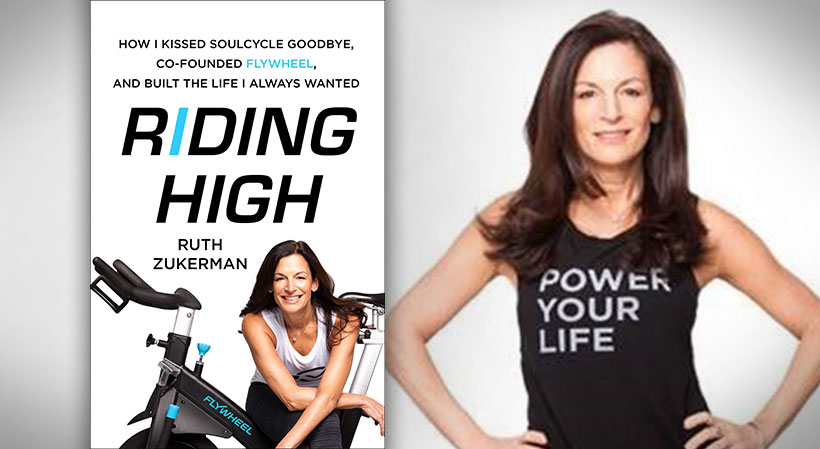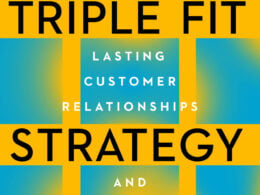The following is adapted from “Riding High,” copyright © 2018 by Ruth Zukerman. First hardcover edition published October 2, 2018 by St. Martin’s Press. All rights reserved.
According to the U.S. Bureau of Labor, the odds of a small business surviving aren’t as slim as you might think: about 75 percent of new businesses survive their first year, and half of them are still viable after five years.
Sure, 50/50 odds might not sound that great, but it’s the old “half-full” or “half-empty” perspective: this also means you have a 50 percent chance of creating a successful enterprise—provided you’re smart about keeping costs down and putting money back into the business so it will grow. We kept our costs reasonable when starting SoulCycle. Thanks to (co-founder) Elizabeth’s initial financial investment, we also avoided taking on huge startup debt. We spent zero dollars on advertising, counting on word-of-mouth. We were also creative. For example, Elizabeth’s solution to the lack of signage outside was to paint a big rickshaw bright yellow and park it by our outside entrance.
In the early spring of 2007, (co-founder) Julie and I began talking to Elizabeth about opening a studio somewhere in the Hamptons. We knew it was a good idea, but we needed her approval since Elizabeth had seeded the business. She and her husband also had a lot of experience in real estate investments.
Julie and I made a solid argument for choosing the Hamptons as our second SoulCycle location. Our current clientele and target demographic basically migrated out to Eastern Long Island for the summer and stayed put until after Labor Day, when their kids returned to school. What better way to keep our old clients and gain new recognition from the elite crop of New Yorkers who could afford to summer there? Plus, they could bring their friends.
Related: How Tiffany Pham is Redefining What it Means to Be a Mogul
We also knew that the demographic in the Hamptons reached well past New York; it was international. Extending our reach into the Hamptons could drive a huge growth spurt for SoulCycle.
Elizabeth was easily sold on the idea. In a way, she was our target audience, since she already owned a house on Eastern Long Island. The three of us took a road trip to look at spaces, our enthusiasm building as we fantasized about our new plan. The realtor had told us about a barn available in Bridgehampton that sounded perfect.
It was love at first sight. The barn was big, bright, and airy, with the perfect rustic feel. We nearly lost the property to another bidder, but Elizabeth managed to wrangle a deal, and the barn was ours. Her perseverance and real estate experience really paid off.
By early fall 2007, I was back in New York City and business had really picked up. With SoulCycle attracting the elite New York heavy hitters, it wasn’t surprising that classmates from the private school (daughters) Kate and Rachel attended knew about the business through their parents. As a result, these parents sometimes brought their kids to classes on weekends or holidays. I was always happy to see them, since Kate and Rachel were so proud of me. Whenever they overheard their peers talking about SoulCycle, they always jumped in and told them that their mom had started the business. I loved being a career role model for my daughters the way my father had been for me.
Meanwhile, the studio was booming. We could barely fit everyone into our classes; they were nearly always sold out, with waiting lists besides. Julie was pushing us to start thinking about expanding, and we all started talking about where we might locate a second studio in the city.
Elizabeth dragged her heels on this idea. I was resistant, too, worrying about whether we had enough really good instructors. We were barely coping with the riders we had, and I argued in favor of keeping up the quality of our classes rather than growing too fast.
Sign Up: Receive the StartupNation newsletter!
Eventually, Julie was able to convince Elizabeth to do it, and I was outvoted. They were right to do so. In hindsight, I can see that I was being too risk-averse—that was always my nature. The truth was that SoulCycle was on a roll, and it was a good time to capitalize on our progress. We chose an Upper East Side location for the next SoulCycle studio, since so many of the riders we had added from our summer in the Hamptons lived in that area.
I was thrilled by our rapidly growing business and more enthusiastic than ever about making SoulCycle a success. Unfortunately, things didn’t go as I’d hoped. Our partnership ended so abruptly that I was left feeling wrung out and exhausted. What was I going to do now?
“Riding High” is available now at fine booksellers and can be purchased via StartupNation.com.






